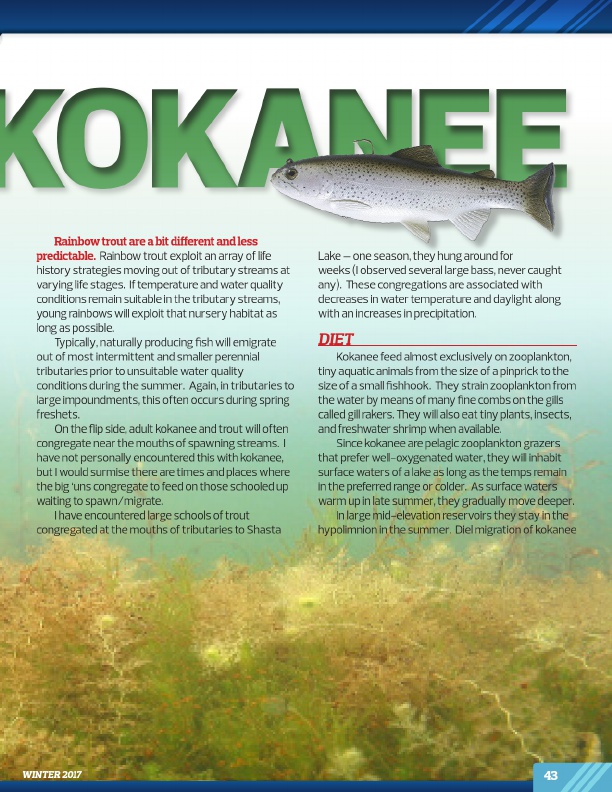
K O KA N E E
Rainbow trout are a bit different and less predictable. Rainbow trout exploit an array of life history strategies moving out of tributary streams at varying life stages. If temperature and water quality conditions remain suitable in the tributary streams, young rainbows will exploit that nursery habitat as long as possible.
Typically, naturally producing fish will emigrate out of most intermittent and smaller perennial tributaries prior to unsuitable water quality conditions during the summer. Again, in tributaries to large impoundments, this often occurs during spring freshets.
On the flip side, adult kokanee and trout will often congregate near the mouths of spawning streams. I have not personally encountered this with kokanee, but I would surmise there are times and places where the big ‘uns congregate to feed on those schooled up waiting to spawn/migrate.
I have encountered large schools of trout congregated at the mouths of tributaries to Shasta
Lake – one season, they hung around for weeks (I observed several large bass, never caught any). These congregations are associated with decreases in water temperature and daylight along with an increases in precipitation.
DIET
Kokanee feed almost exclusively on zooplankton, tiny aquatic animals from the size of a pinprick to the size of a small fishhook. They strain zooplankton from the water by means of many fine combs on the gills called gill rakers. They will also eat tiny plants, insects, and freshwater shrimp when available.
Since kokanee are pelagic zooplankton grazers that prefer well-oxygenated water, they will inhabit surface waters of a lake as long as the temps remain in the preferred range or colder. As surface waters warm up in late summer, they gradually move deeper.
In large mid-elevation reservoirs they stay in the hypolimnion in the summer. Diel migration of kokanee
WINTER 2017
43